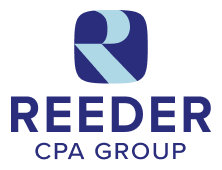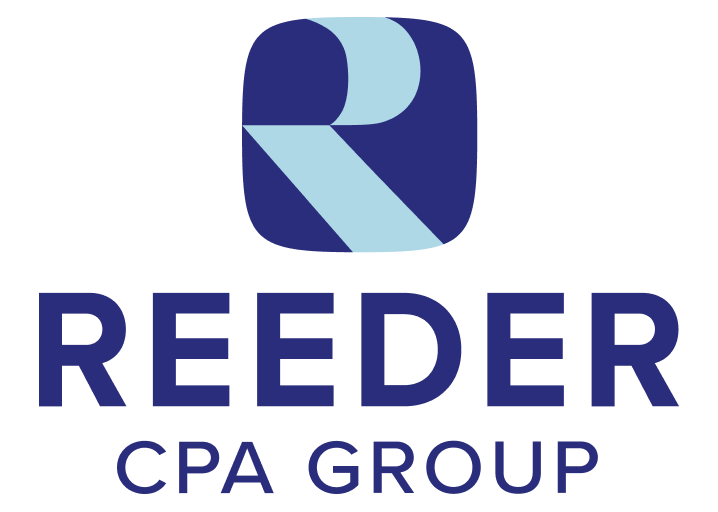Are you looking to buy a franchise? If so, one crucial aspect to consider is your entity structure strategy. This refers to the legal structure of your business and can have significant implications for taxes, liability, and management. Choosing the right entity structure can be challenging, but a certified public accountant (CPA) at Reeder CPA Group can help you navigate the process and choose the best option for your needs.
What is an Entity Structure Strategy?
An entity structure strategy is the process of choosing the right legal structure for your franchise. Some options include sole proprietorship, partnership, corporation, limited liability company (LLC) and ROBS. Each of these has its own advantages and disadvantages, and the best choice for you will depend on your goals and circumstances.
Different Types of Entity Structures for Franchisees
Here’s a brief overview of the different types of entity structures that potential franchisees may consider:
Sole Proprietorship:
This is the simplest and most common type of business structure. A sole proprietorship is a business owned and operated by a single individual, who is personally liable for all the business’s debts and obligations. From a tax perspective, a sole proprietorship is not taxed as a separate entity from the owner, meaning that the business’s profits and losses are reported on the owner’s personal tax return.
Partnership:
A partnership is a business owned and operated by two or more people. In a general partnership, each partner is personally liable for the business’s debts and obligations. From a tax perspective, a partnership is also not taxed as a separate entity from the owners, meaning that the business’s profits and losses are passed through to the partners and reported on their personal tax returns.
Corporation:
The corporation entity structure is a popular way for businesses to incorporate and operate as a separate legal entity. There are two types of corporations: C-Corporations and S-Corporations. C-Corporations are standard and offer several benefits, including the ability to raise capital through the issuance of stock, potential tax deductions for employee benefits, and limited liability protection for shareholders. Additionally, C-Corporations have no restrictions on the number or type of shareholders they can have. S-Corporations, on the other hand, offer pass-through taxation, which means that the company’s profits and losses are passed through to the shareholders’ personal tax returns, thereby avoiding double taxation. S-Corporations also have a limited number of shareholders and certain restrictions on the types of shareholders they can have. Overall, both C-Corporations and S-Corporations offer unique benefits, and the decision to choose one over the other will depend on the business’s specific needs and circumstances.
Limited Liability Company (LLC):
An LLC is a hybrid structure that combines the liability protection of a corporation with the tax benefits of a partnership. LLC owners are called members, and they have limited liability for the business’s debts and obligations. Members may manage the LLC themselves, or they may choose to appoint a manager. From a tax perspective, an LLC can also be taxed as a separate entity or as a partnership, depending on the number of members and how they choose to be taxed.
ROBS (Rollovers for Business Startups):
A ROBS entity structure is a type of financing arrangement that allows entrepreneurs to use their retirement funds to start or purchase a business without incurring early withdrawal penalties or tax liabilities. There are several benefits to this structure, including increased access to capital, tax advantages, and more control over the business. It involves setting up a C-Corporation and immediately establishing a retirement plan for the C-Corporation. Then, existing retirement assets are rolled over into the ROBS retirement plan (the rollover). The ROBS retirement plan then invests in the stock of the C-Corp (capitalization).
The capitalization event results in the funds being deposited into the ROBS C-Corp’s checking account where it can be used to invest in the business and fund its operations. Under this structure, the business owner still retains the benefits of a C-Corp with some exceptions. The ROBS structure provides an additional source of funding for entrepreneurs who may not qualify for traditional loans or have sufficient personal savings to start a business. Also, since the ROBS structure uses retirement funds, the entrepreneur does not incur any early withdrawal penalties or tax liabilities.
How a CPA Can Help You Choose the Right Entity Structure
At Reeder CPA Group, we can provide valuable guidance and advice when it comes to choosing the right entity structure. We can help you understand the tax implications of different options, as well as the legal and management implications. We can also help you make an informed decision based on your specific needs and goals.
Here are some ways we can help you choose the right entity structure:
Understanding Liability Protection:
A sole proprietorship, for example, offers no protection against personal liability, meaning the owner is personally responsible for any debts or legal obligations of the business. In contrast, corporations and LLCs provide limited liability protection, which shields the owners’ personal assets from business-related liabilities. At Reeder CPA Group, we can help you understand the legal implications of each option and determine which structure offers the right level of protection for your specific situation.
Minimizing Tax Liability:
Different entity structures are taxed differently, and it’s essential to understand the tax implications of each option when choosing the right structure for your business. For example, a C-Corporation may offer tax benefits such as the ability to deduct employee benefits, but it can also result in double taxation of profits. In contrast, an S-Corporation or LLC may offer pass-through taxation, which means that the business’s profits and losses are passed through to the owners’ personal tax returns. At Reeder CPA Group, we can help you evaluate the tax implications of each option and determine which structure will minimize your tax liability while still meeting your business needs.
Evaluating Management Options:
Each entity structure comes with its own management implications, and it’s important to evaluate your management options when choosing the right structure for your business. For example, a sole proprietorship offers complete control over the business, but it may be challenging to raise capital or expand the business. In contrast, a corporation may offer greater opportunities for raising capital, but it may also require more complex management structures. At Reeder CPA Group, we can help you evaluate your management options and determine which structure will give you the level of control you desire while still meeting your business needs.
For more information about different types of entities, the IRS and SBA have sections devoted to business structures.
Benefits of Working with a CPA
Working with a CPA can be an excellent investment when it comes to choosing the right entity structure for your franchise. At Reeder CPA Group, we can provide you with expert advice, help you minimize your tax liability, and ensure that you choose the best legal structure for your unique situation. Contact us today to learn more about how we can assist you with your entity structure questions.

